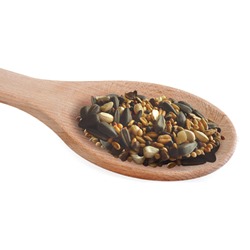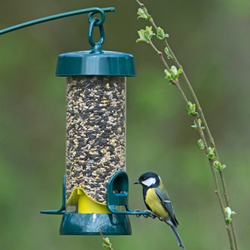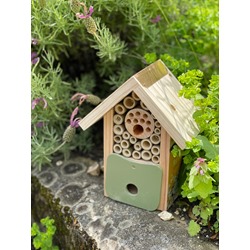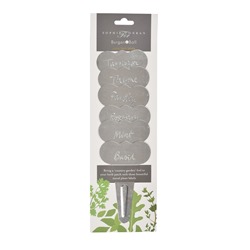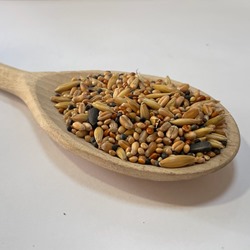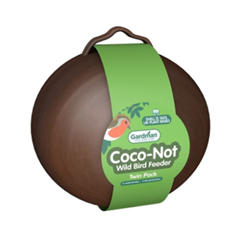Last week Richard attended a really informative meeting held at Rotherfield Farm near Alton, to hear about the conservation work they are doing to help re-establish grey partridge on the farm and increase lapwing numbers which have been in sharp decline over the last decade. The farm is owned by Sir James Scott and has been in the family for the last 200 years. It is a 5,000 acre estate, with arable, forestry and a large dairy.
Grey partridge are one of the 3 main indicators for modern day farming. The other two are brown hares and skylarks. Here on the farm we have hares and skylarks in abundance, but we lost our grey partridge about 5 years ago - so this was a fantastic opportunity for Richard to find out what we can do to help them recover.

Grey Partridge
The biggest contributor to the decline of grey partridge is the loss of mixed farming. In the 'olden days' ( when I was a kid!) most farms had livestock and arable. Farmers grew crops to feed their cattle, so there was a lot of grassland. Cattle farming is hard work and requires a lot of labour ( which is expensive) and many farmers gave up their cattle in favour of pure arable farming which meant the grass acreage shrank dramatically.
Rotherfield farm is a few years into the project now and they are starting to see numbers rise after experimenting with a variety of different habitats. The focus was on creating a diverse choice for the partridge - somewhere they would liek to live at all times, and also, very importantly, increasing the insect population as a foodsource. Akin to a 5 star B&B really!
Like us, they have been experimenting with a range of wild bird cover crops, which provide a place to escape and hide, shelter, and seed for food throughout the winter months. They have also been feeding wheat from hoppers right through until the end of March - which is crucial since natural food is very scarce in February and March.

This wildbird cover crop contains chicory, reed millet, fennel, sweet clover and kale.
Once planted and it will last for 2 years.
The biodiversity of the farm has been helped by creating smaller acreages and plots, and rotating them so there is always the best chance of food, cover and open areas. Beetle banks have been created as a food source and they are now seeing lots of Yellowhammers, and a small number of Whitethroats have been identified, which is very exciting and testament to the effectiveness of the beetle banks.
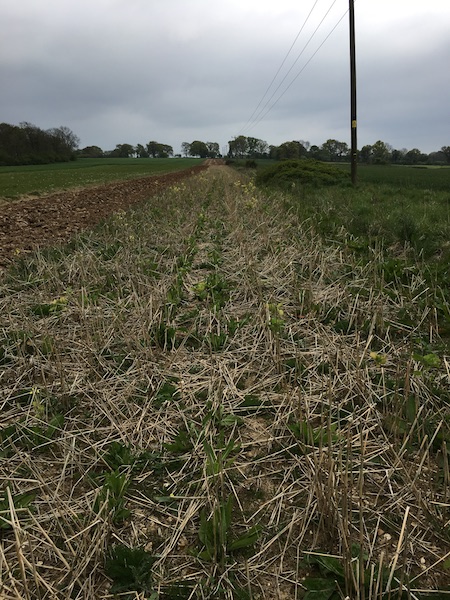
From the right you can see a beetle bank, then a strip of wildbird cover crop then a fallow strip and a wildflower meadow to the left hand side
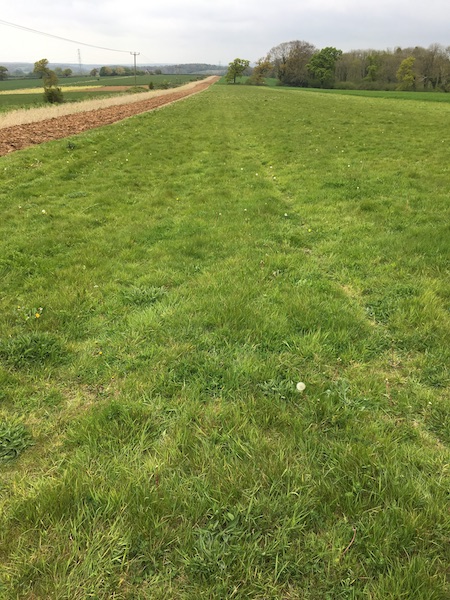
Reverse view showing biodiverse habitat - with wildflower meadow, fallow, wildbird cover crop and beetle bank to the left.
The wildflower meadows are managed by taking a hay crop off late in the summer months/early autumn. They don't fertilise the areas which reduces the soil indices and subsequently reduces the grasses. This allows wildflowers to flourish and with flowers come butterflies!
As a result of these initiatives, lapwing numbers are starting to increase as well, which is fantastic!


Adult lapwing and a mini one!
To help the lapwings, Rotherfield have created lapwing plots; open areas where they like to nest, adjacent to 'cover ' areas where they can hide, and critically, run their chicks to safety.
All this is terrific for bird life and at the last bird count on the farm there were more than 90 species of bird identified!
So with all that knowledge - we can look to see what we can do to improve the biodiversity of habitat here on Street End Farm and create an opportunity for some of these species to thrive. Plenty to do!
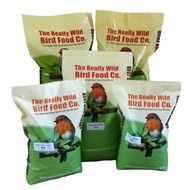 Back
Back Bird Foods
Bird Foods  Seed Mixes
Seed Mixes Straight Seeds
Straight Seeds Mealworms & Worms
Mealworms & Worms Chicken Feed
Chicken Feed Duck Food
Duck Food Peanuts & Peanut Butter
Peanuts & Peanut Butter Suet & Fat Balls
Suet & Fat Balls No Mess Bird Seed
No Mess Bird Seed  Wheat Free Bird Seed
Wheat Free Bird Seed Sunflower Seeds
Sunflower Seeds Softbill Bird Food
Softbill Bird Food Bulk Bird Seed
Bulk Bird Seed Trial Packs
Trial Packs Pick & Mix
Pick & Mix Mini Pick & Mix
Mini Pick & Mix Birdie Basics: Budget Bird Food
Birdie Basics: Budget Bird Food Food for Small Birds
Food for Small Birds Back
Back Bird Feeders
Bird Feeders  Seed Feeders
Seed Feeders Peanut Feeders
Peanut Feeders Peanut Butter Feeders
Peanut Butter Feeders Suet & Fat Feeders
Suet & Fat Feeders Window Feeders
Window Feeders Hanging Feeders
Hanging Feeders Feeding Stations
Feeding Stations Ground Feeders
Ground Feeders Easy Clean Feeders
Easy Clean Feeders Bird Tables
Bird Tables Seed Trays
Seed Trays Bird Baths & Drinkers
Bird Baths & Drinkers Feeder Accessories
Feeder Accessories Feeder Hygiene
Feeder Hygiene Squirrel Proof Bird Feeders
Squirrel Proof Bird Feeders For the Kids
For the Kids Niger Seed Feeders
Niger Seed Feeders Mealworm Feeders
Mealworm Feeders Bird Food Storage
Bird Food Storage Fat Ball Feeders
Fat Ball Feeders Tube Feeders
Tube Feeders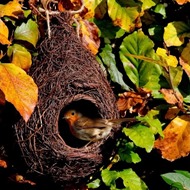

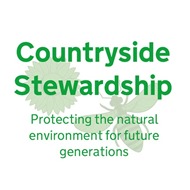

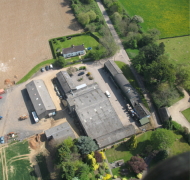 Our Farm
Our Farm  Tips & Advice
Tips & AdviceContact Us

